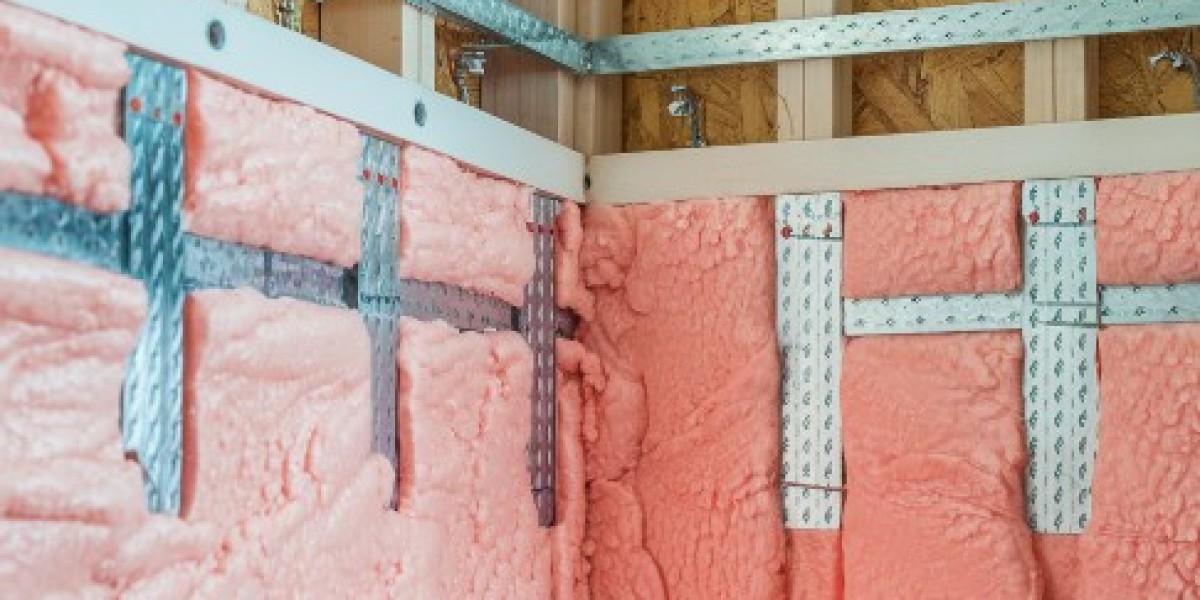In the contemporary landscape of architecture, sustainability and energy efficiency are not just buzzwords; they have become essential criteria in the design and construction of buildings. As concerns about climate change and rising energy costs continue to mount, architects and builders are seeking innovative solutions to improve building performance. One such solution is the use of Continuous Insulation Systems (CIS). This article will explore the concept of continuous insulation, its benefits, applications, and why it is vital for modern architecture.
What is Continuous Insulation?
Continuous insulation refers to a layer of insulation material that is installed continuously across all structural elements, including walls, roofs, and floors, without any thermal breaks. This contrasts with traditional insulation methods, which often involve batt or roll insulation placed between framing members, leaving gaps and seams that can lead to energy loss.
CIS can be made from various materials, including foam board, spray foam, and rigid mineral wool. The key characteristic is that it provides a seamless barrier that significantly reduces thermal bridging, where heat escapes through the building's structural components.
The Importance of Continuous Insulation in Modern Architecture
1. Enhanced Energy Efficiency
One of the most significant advantages of CIS is its ability to enhance energy efficiency. By reducing thermal bridging, continuous insulation helps maintain a stable internal temperature, which can lead to substantial energy savings. According to the U.S. Department of Energy, buildings are responsible for about 40% of the nation's energy consumption. Implementing continuous insulation can reduce heating and cooling costs by up to 20-30%, making it a financially sound choice for both residential and commercial buildings.
2. Improved Indoor Comfort
In addition to energy savings, continuous insulation contributes to a more comfortable indoor environment. Traditional insulation methods can create temperature inconsistencies within a building, leading to drafts and cold spots. With CIS, the consistent thermal envelope helps maintain uniform temperatures throughout the space, enhancing occupant comfort. This is especially important in commercial buildings where employee productivity can be directly influenced by their working environment.
3. Moisture Control
Moisture management is crucial in modern architecture, as excess moisture can lead to mold growth and structural damage. Continuous insulation systems, when properly designed and installed, can help mitigate moisture-related issues. The insulation acts as a thermal barrier, reducing the risk of condensation forming on cold surfaces. Additionally, many continuous insulation materials are resistant to moisture absorption, further protecting the building envelope.
4. Compliance with Building Codes and Standards
As energy efficiency regulations become stricter, continuous insulation systems help architects and builders comply with building codes and standards. Many jurisdictions have adopted the International Energy Conservation Code (IECC), which mandates specific insulation requirements for new construction. By incorporating CIS, builders can more easily meet these requirements, avoiding costly retrofits and modifications later in the construction process.
5. Flexibility in Design
Continuous insulation offers architects greater flexibility in design. With the ability to create a continuous thermal barrier, architects can explore innovative shapes and forms without the constraints imposed by traditional insulation methods. This flexibility can lead to unique architectural expressions while maintaining energy efficiency and performance.
6. Environmental Benefits
Incorporating continuous insulation systems into building design contributes to sustainability. By improving energy efficiency, buildings with CIS require less energy for heating and cooling, reducing their carbon footprint. Furthermore, many insulation materials used in CIS are manufactured using recycled content or are themselves recyclable at the end of their life cycle, aligning with the principles of sustainable construction.
Applications of Continuous Insulation Systems
Residential Buildings
Continuous insulation is increasingly being used in residential construction. Homes built with CIS tend to have lower energy bills and improved comfort levels. For example, the Passive House standard, which emphasizes ultra-energy-efficient buildings, often incorporates continuous insulation to achieve its stringent performance criteria.
Commercial Buildings
In commercial architecture, where energy costs can significantly impact the bottom line, continuous insulation systems are becoming a standard practice. Retail spaces, office buildings, and warehouses are all benefiting from the energy-saving advantages of CIS. Notably, many green building certifications, such as LEED (Leadership in Energy and Environmental Design), encourage or require the use of continuous insulation.
Industrial Structures
Industrial buildings, including manufacturing plants and distribution centers, also utilize continuous insulation systems to maintain temperature control and energy efficiency. In environments where machinery generates heat, maintaining a consistent temperature can be crucial for both operational efficiency and employee comfort.
Retrofit Projects
Continuous insulation systems are ideal for retrofit projects, where upgrading the building envelope can lead to significant energy savings. Applying continuous insulation over existing walls can improve thermal performance without the need for extensive renovations, making it a cost-effective solution for older buildings.
Best Practices for Implementing Continuous Insulation Systems
1. Proper Material Selection
Choosing the right insulation material is critical for the performance of a continuous insulation system. Factors such as R-value (thermal resistance), moisture resistance, and environmental impact should be considered when selecting insulation materials. Rigid foam boards, mineral wool, and spray foam are popular choices, each with distinct advantages depending on the application.
2. Seamless Installation
To maximize the benefits of continuous insulation, proper installation is paramount. All joints, seams, and penetrations should be carefully sealed to eliminate thermal bridging. Gaps in the insulation can compromise its effectiveness, so attention to detail during installation is essential.
3. Integrating with Building Systems
Continuous insulation systems must be integrated with other building systems, such as HVAC and moisture management strategies. Understanding how these systems interact can help optimize the overall performance of the building. Collaboration between architects, engineers, and contractors during the design phase can ensure a holistic approach to building performance.
4. Regular Maintenance and Inspections
Continuous insulation systems, like any building component, require regular maintenance and inspections. Ensuring that the insulation remains intact and free from damage is crucial for maintaining its performance over time. Regular inspections can help identify potential issues before they lead to costly repairs.
Conclusion
As the construction industry moves towards more sustainable practices, continuous insulation systems have emerged as a vital component of modern architecture. Their ability to enhance energy efficiency, improve indoor comfort, and provide design flexibility makes them an essential choice for architects and builders. With the added benefits of moisture control and compliance with building codes, continuous insulation systems are not just a trend; they are a necessary evolution in the way we approach building design and construction.
By embracing continuous insulation, we are taking significant strides towards creating buildings that are not only energy-efficient but also comfortable, resilient, and environmentally responsible. As architects and builders continue to innovate and push the boundaries of design, continuous insulation will undoubtedly play a pivotal role in shaping the future of modern architecture.








